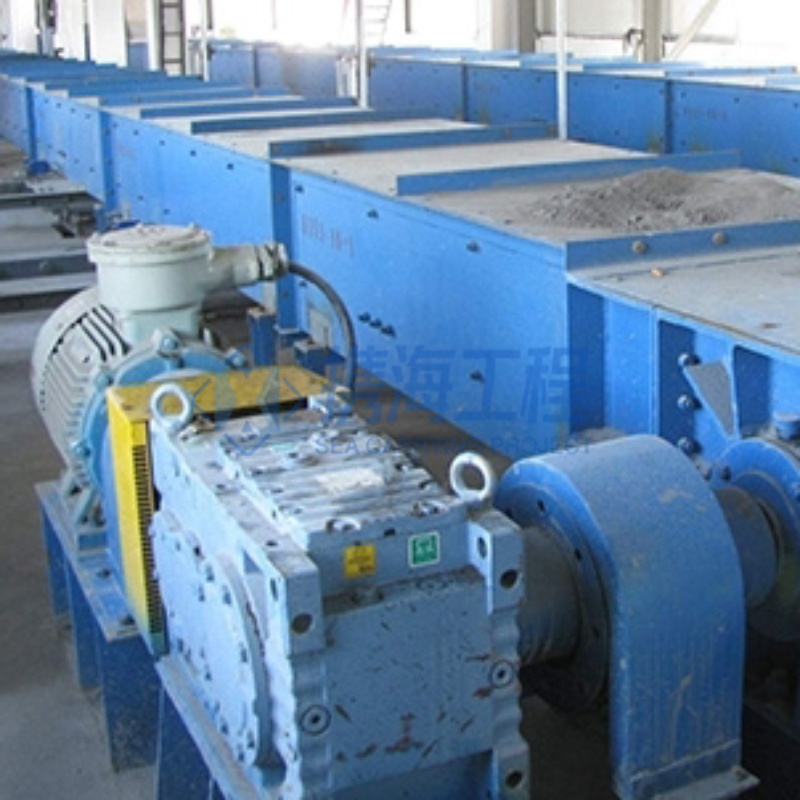Exploring Different Materials Used in Drying Equipment Design
Nov 19,2025
Exploring Different Materials Used in Drying Equipment Design
Table of Contents
1. Introduction to Drying Equipment
2. The Importance of Material Selection in Drying Equipment
3. Common Materials Used in Drying Equipment Design
3.1 Stainless Steel
3.2 Aluminum
3.3 Plastic
3.4 Ceramics
4. Advanced Materials in D

Exploring Different Materials Used in Drying Equipment Design
Table of Contents
- 1. Introduction to Drying Equipment
- 2. The Importance of Material Selection in Drying Equipment
- 3. Common Materials Used in Drying Equipment Design
- 4. Advanced Materials in Drying Equipment
- 5. Key Properties of Materials for Drying Equipment
- 6. Future Trends in Drying Equipment Material Design
- 7. Case Studies of Material Selection in Drying Equipment
- 8. Conclusion
1. Introduction to Drying Equipment
The demand for **drying equipment** spans across various industries, including food processing, pharmaceuticals, textiles, and manufacturing. Drying is a critical process that removes moisture from materials, enabling better storage, longevity, and usability. Understanding the materials used in designing these systems is essential for optimizing performance and ensuring reliability.
2. The Importance of Material Selection in Drying Equipment
Selecting the right materials for drying equipment is paramount. The choice impacts not only the durability and efficiency of the equipment but also its overall cost and maintenance requirements. Factors such as **corrosion resistance, thermal conductivity, and weight** play crucial roles in determining the lifespan and functionality of drying systems.
3. Common Materials Used in Drying Equipment Design
3.1 Stainless Steel
**Stainless steel** is one of the most popular materials used in drying equipment due to its robustness and durability. Its resistance to corrosion and heat allows it to perform well in high-temperature environments. Stainless steel is particularly advantageous in the food industry, where hygiene standards are strict, and contamination risks must be minimized.
3.2 Aluminum
**Aluminum** offers a lightweight alternative to stainless steel and is highly resistant to corrosion. This material is often utilized in drying applications where weight is a concern, such as in portable drying systems. Aluminum has excellent thermal conductivity, which enhances the efficiency of drying processes.
3.3 Plastic
**Plastics**, such as polycarbonate and polypropylene, are increasingly used in drying equipment, especially in applications requiring resistance to chemicals and moisture. While not as durable as metals, plastics can be effective in specific environments and often come at a lower cost. They are also lightweight and easier to mold into complex shapes, offering design flexibility.
3.4 Ceramics
**Ceramic materials** are known for their high-temperature resistance, making them ideal for specialized drying applications. They are often employed in processes that involve extreme conditions where metallic materials would fail. Ceramics are also non-reactive, making them suitable for drying sensitive materials.
4. Advanced Materials in Drying Equipment
4.1 Composite Materials
**Composite materials**, which combine two or more distinct materials to achieve superior properties, are becoming popular in drying equipment design. These materials can offer enhanced strength, reduced weight, and improved thermal efficiency. For instance, composites made from reinforced plastics can withstand high temperatures while remaining lightweight.
4.2 Nanomaterials
With advancements in technology, **nanomaterials** are emerging as a promising option in drying equipment design. Their unique properties, such as increased surface area and enhanced thermal conductivity, make them suitable for applications requiring rapid moisture removal. Nanomaterials can significantly improve the efficiency and effectiveness of drying processes.
5. Key Properties of Materials for Drying Equipment
When selecting materials for drying equipment, several key properties should be considered:
- **Thermal Conductivity**: Materials with high thermal conductivity facilitate faster drying times, which improves overall efficiency.
- **Corrosion Resistance**: This is crucial for materials exposed to moisture and certain chemicals, ensuring longevity.
- **Weight**: Lighter materials can reduce shipping and installation costs while improving portability.
- **Cost-Effectiveness**: The chosen material should balance performance with budget constraints.
Understanding these properties enables designers and engineers to make informed decisions that align with the specific requirements of their drying applications.
6. Future Trends in Drying Equipment Material Design
The future of drying equipment design is likely to be influenced by ongoing research and technological advancements. Some anticipated trends include:
- **Sustainable Materials**: There is a growing emphasis on using eco-friendly materials that minimize environmental impact.
- **Smart Materials**: Integrating smart technologies into materials to monitor and adjust drying processes in real-time could revolutionize efficiency.
- **Recyclability**: As sustainability becomes more important, the use of recyclable materials in drying equipment design will likely increase.
These trends will shape how drying equipment is designed and manufactured, pushing the boundaries of efficiency and sustainability.
7. Case Studies of Material Selection in Drying Equipment
Several case studies illustrate the impact of material selection on drying equipment performance:
- **Food Processing Industry**: A company switched from stainless steel to a composite material in its drying systems. The result was a 30% reduction in energy costs due to improved thermal efficiency.
- **Textile Manufacturing**: By using lightweight aluminum in portable drying units, a textile manufacturer enhanced the usability and flexibility of its drying processes, leading to increased production efficiency.
These examples highlight the critical role that material choice plays in enhancing productivity and reducing costs.
8. Conclusion
In conclusion, the selection of materials for drying equipment design is a multifaceted decision that significantly impacts performance, efficiency, and longevity. From **stainless steel** and **aluminum** to innovative **composite** and **nano-materials**, each choice comes with its advantages and considerations. As technology continues to evolve, staying informed about these materials and their properties will be essential for industry professionals looking to optimize drying processes. Embracing new trends in material science will ensure that drying equipment meets the demands of various applications while promoting sustainability and efficiency.
Previous article





